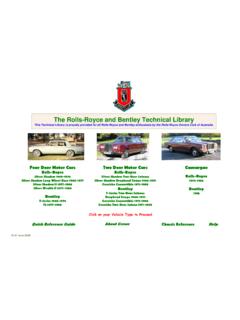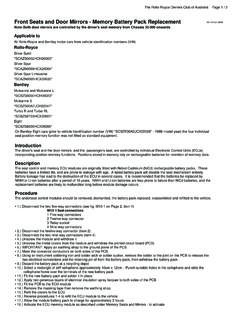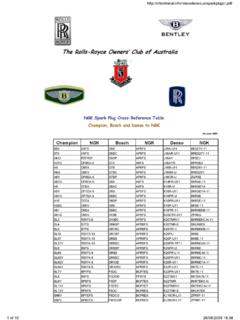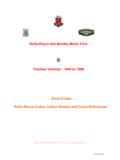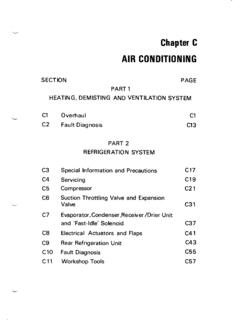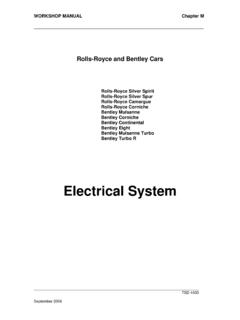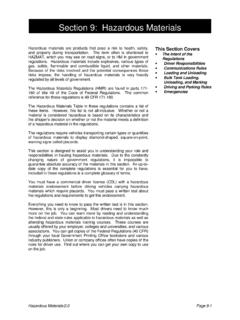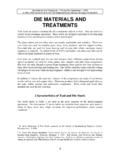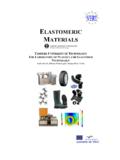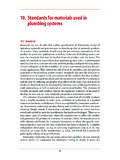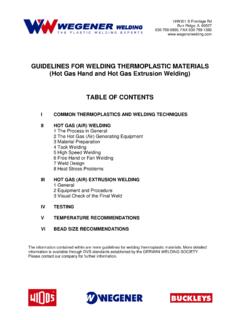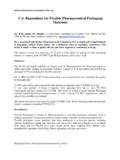Transcription of O-Ring Material Reference Guide
1 The Rolls-Royce Owners' Club of Australia This Table Provides Us with a Guide to the Materials for O-Rings and Seals Most Suited to Our Motor Cars O-Ring Material Reference Guide Basic Raw Materials Nitrile (NBR). The most common nitrile copolymer blend is the compound known as Buna-N. It has a very good resistance to petroleum based hydraulic oils. Buna-N and also works well with fuels like diesel or gasoline. Nitrile seals have a good resistance to compression set, but their flexibility suffers to some extent in the lower temperature range. The seals made from this Material have a low resistance to ozone and must be stored carefully in most of the environments. The working temperatures are -40 F. to +240 F. Ethylene-Propylene (EPDM). Ethylene-Propylene is used for sealing phosphate ester hydraulic fluids like Skydrol.
2 It is not suitable for petroleum based fluids, but is highly effective for use with steam, acetone, dilute acids and alkalies. Specially compounded, it can be made suitable for automobile brake systems. The temperature ranges from -20 F to +300 F. Silicone (VMQ). Silicone is an elastomer that is made from silicon, oxygen, hydrogen and carbon. The main use of this Material is in static seals employed in a wide (-75 F to +450 F) range of temperatures. It has high resistance to dry heat, ultraviolet light and ozone. This Material is not recommended for dynamic situations due to poor abrasion resistance and high friction characteristics. Fluorocarbon (FKM) - VITON . VITON is the registered trademark of DuPont Dow Elastomer. Fluorocarbon combines high temperature resistance with an excellent chemical resistance.
3 It is excellent for use with alcohol and aromatic fuels and highly resistant to ultraviolet light and ozone. This Material is not recommended for the use in low temperatures or in aircraft hydraulic fluids. Its temperature range is -20 F to +400 F. Urethane (AU, EU) . Formulated of copolymers of ether or ester based urethanes, this Material is used in a wide application of seals, wipers, back-up rings, cushions, bumpers and a myriad of other uses. Highly resistant to oil swell, ozone, oxidation and abrasion, it also has excellent cut resistance. Highly resilient, urethanes also have high tensile strength and elongation properties. Urethanes remain an excellent choice in hydraulic systems using petroleum based fluids. Most urethane seals remain flexible and efficient in temperatures ranging from - 65 F to +200 F with some able to withstand intermittent temperatures up to +300 F.
4 PTFE - Teflon . Teflon is the registered trademark of DuPont Dow Elastomer. Most PTFE seals, in order to retain their toughness and flexibility, are fortified with short glass fibre, bronze flashes, carbon, graphite, or a combination of these fillers. Because of lack of resilience (memory) in PTFE, an energiser is most often employed to obtain the desired fit. Benefits are chemical inertness, high heat resistance, low temperature flexibility, low running friction, and non-adhesive characteristics. Temperatures to +500 F are obtainable but are often reduced by the filler or energiser employed. The Rolls-Royce Owners' Club of Australia rht July 2010.
